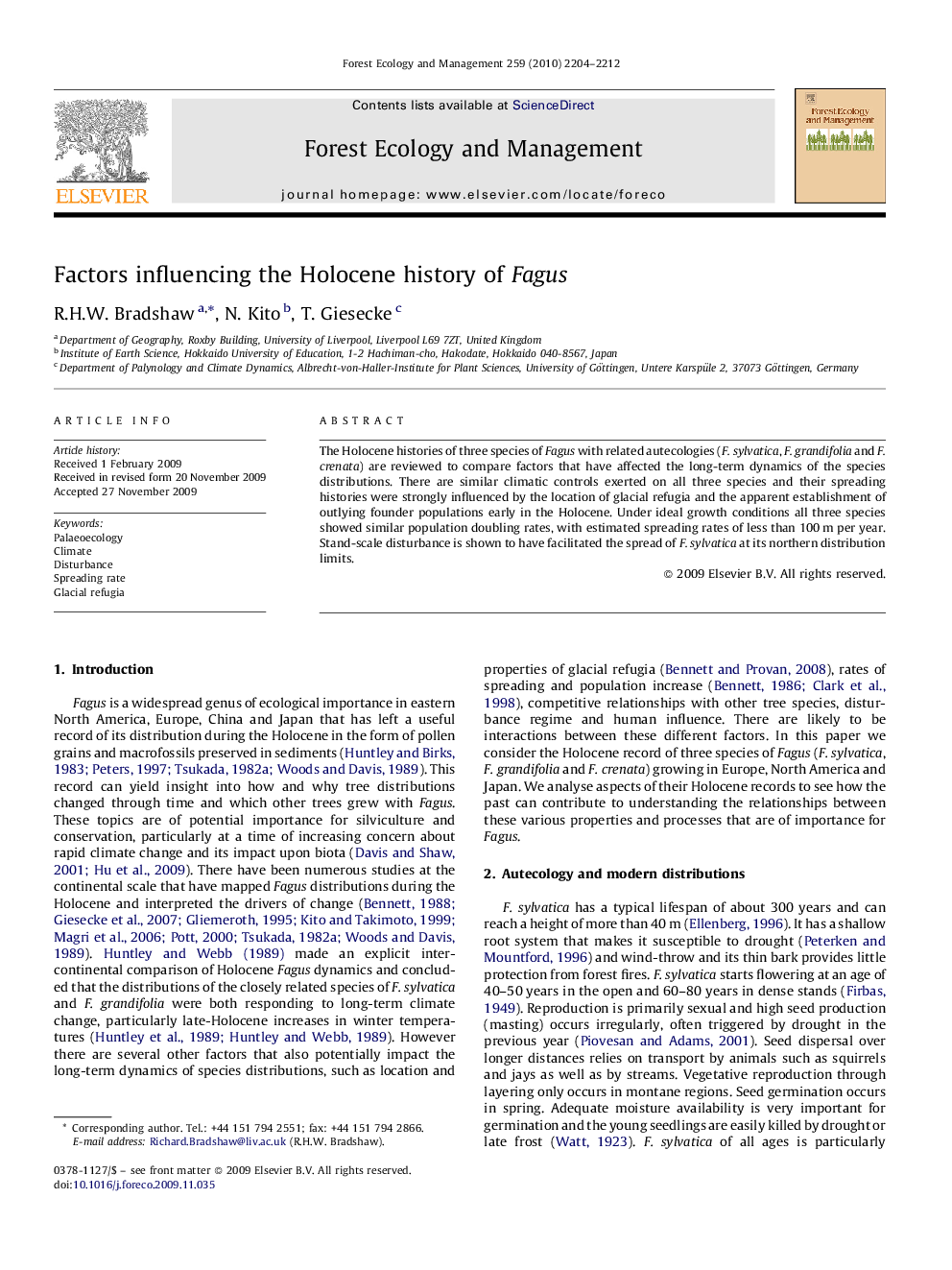| Article ID | Journal | Published Year | Pages | File Type |
|---|---|---|---|---|
| 88293 | Forest Ecology and Management | 2010 | 9 Pages |
Abstract
The Holocene histories of three species of Fagus with related autecologies (F. sylvatica, F. grandifolia and F. crenata) are reviewed to compare factors that have affected the long-term dynamics of the species distributions. There are similar climatic controls exerted on all three species and their spreading histories were strongly influenced by the location of glacial refugia and the apparent establishment of outlying founder populations early in the Holocene. Under ideal growth conditions all three species showed similar population doubling rates, with estimated spreading rates of less than 100 m per year. Stand-scale disturbance is shown to have facilitated the spread of F. sylvatica at its northern distribution limits.
Related Topics
Life Sciences
Agricultural and Biological Sciences
Ecology, Evolution, Behavior and Systematics
Authors
R.H.W. Bradshaw, N. Kito, T. Giesecke,
